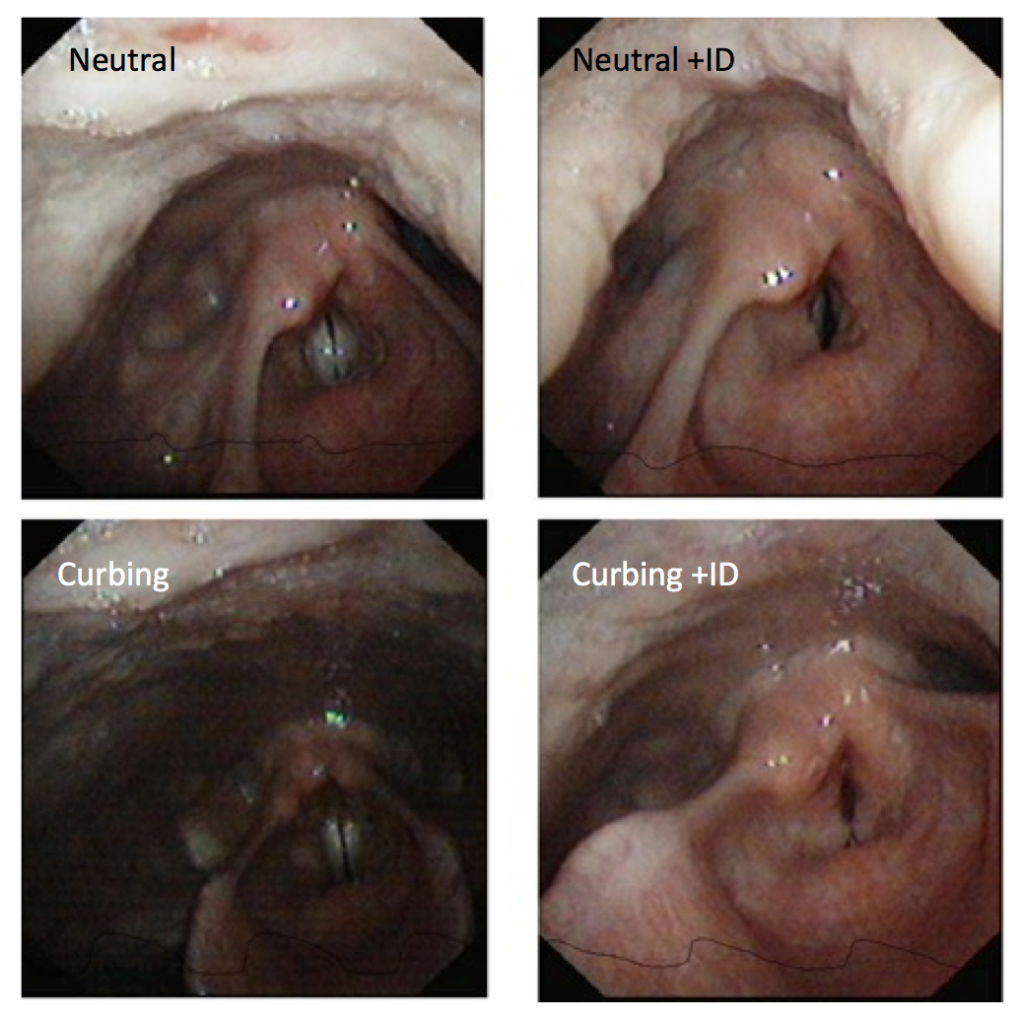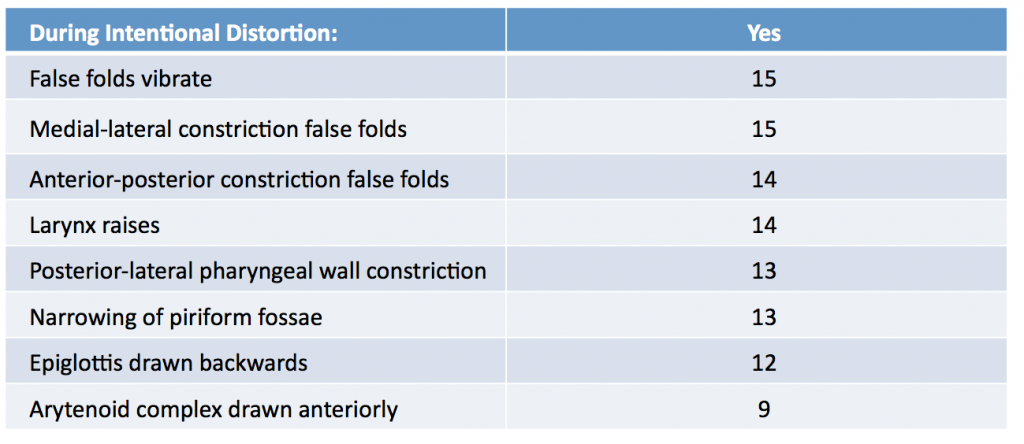Methods
In June 2007 Julian McGlashan and Cathrine Sadolin performed an endoscopy study and an endoscopy/high speed study in 2012 at CVI in Copenhagen.
Twenty-one singers (ten males and eleven females) trained in the Complete Vocal Technique were recruited and asked to produce a sustained vowel in each of the four modes and then adding distortion to that that mode. Subsequently they were asked to alternate between the ‘clear’ mode and the mode with distortion.
Only 15 subjects had pictures that we could analyse for this particular study, so 5 were excluded as they could either not tolerate the examination (1), did not perform the distortion but made a creaking (1) or the image quality was not adequate for interpretation (3).
Each singer was examined using an OTVS7 camera (Olympus) and ENFV2 videoscope (Keymed) coupled to the Laryngostrobe (Laryngograph) digital capture system. Laryngograph electrodes were positioned over the thyroid cartilages and an omnidirectional microphone placed at distance from the singer which allowed recordings at all levels of loudness. Also the ELG and acoustic signals were captured and analysed with the Speech Studio (Laryngograph) software program.
Each set of modes (with and without distortion) video images were analysed by Julian McGlashan and Cathrine Sadolin and the appearance and relationship between the key anatomical features was agreed by consensus and documented. The consistent features were identified and descriptive and explanatory text to aid pattern recognition.
The Laryngeal gestures are more to be seen as patterns of progression from mode to mode, rather than aboslutes. The progession in the patterns can be used as guidelines on how to identify the modes within each singer.
For the distortion these are the parameters we looked at: the shape of the glottis, the position of the false cords, the anterior posterior narrowing, the shape of the pirriforma fossa, the hight of the larynx, the pharyngeal wall, the epiglottis and the arytenoid/cuneiform complex.
Not only did we look at what was changing between using the mode and the mode with distortion, we also looked at what was actually vibrating.
Aim
To get a better understanding of the laryngeal changes associated with Distortion and to examine the interaction of supraglottic vibration during intentional Distortion and vocal fold vibration.
Levels
We gave the various parts in the vocal tract levels in order to identify and specify on which levels the various changes take place. The levels also make it easier to communicate where the changes take place. On the stills from the footage only the first 3-4 levels are seen. For more info on the level, click here.
Stills
A still image for each of the modes and the following distortion was produced from the videos. The still images were chose by listening to the sound without seeing the images and extracting the stills when the sound was as close to the centre of the mode as possible.
Here are some still examples of the mode with and without distortion. Images on left are the mode without distortion and on the right with intentional distortion for a male singer:


Here are the key video-laryngostroboscopic gestures during distortion for our 15 subjects

Results
When we look at the still examples of the mode with and without distortion. The most obvious thing is the false cords seems to be coming in and are vibrating. Also the larynx seems to be coming up, and there are some anterior posterior narrowing and there is loss of the Pirriforma fossa.
You can see the progressive narrowing of the supra glottis structure with the modes and then additional narrowing with the distortion, and especially you can see the false folds vibrating.
- false cords are vibrating
- there is medial- lateral constriction of the false folds
- anterior-posterior narrowing
- and the larynx is rising
- there was narrowing at the posteral lateral pharyngeal wall
- narrowing of the pirriforma fossa
Conclusion
Distortion can be done safely.
In all the examples where we can see the vocal folds, or look at the laryngograph trace, there seems to be a resonably regular pattern, and there didn’t appear to be any evidence of the effect (or any additional noises) being produced in the vocal fold level.
But it need is a good technique to ensure accurate vocal mode setting done correctly and an intentional application of the effect.
This information comes from a study effects with the title ‘Can vocal effects such as distortion, growling, rattle and grunting and be produced without traumatising the vocal folds?’. This study was presented by Julian McGlashan at PEVOC7 conference in Groningen, Netherlands, 2007.
This information comes from a study Distortion study with the title ‘Vocal effects in singing: a study of intentional distortion using laryngostroboscopy and electrolaryngography’. This study was presented by Julian McGlashan at AQL ‘10th International Conference on Advances in Quantitative Laryngology, Voice and Speech Research’ conference in Cincinnati, Ohio, USA June 3-4, 2013. (see the Proceeding) (see the video
